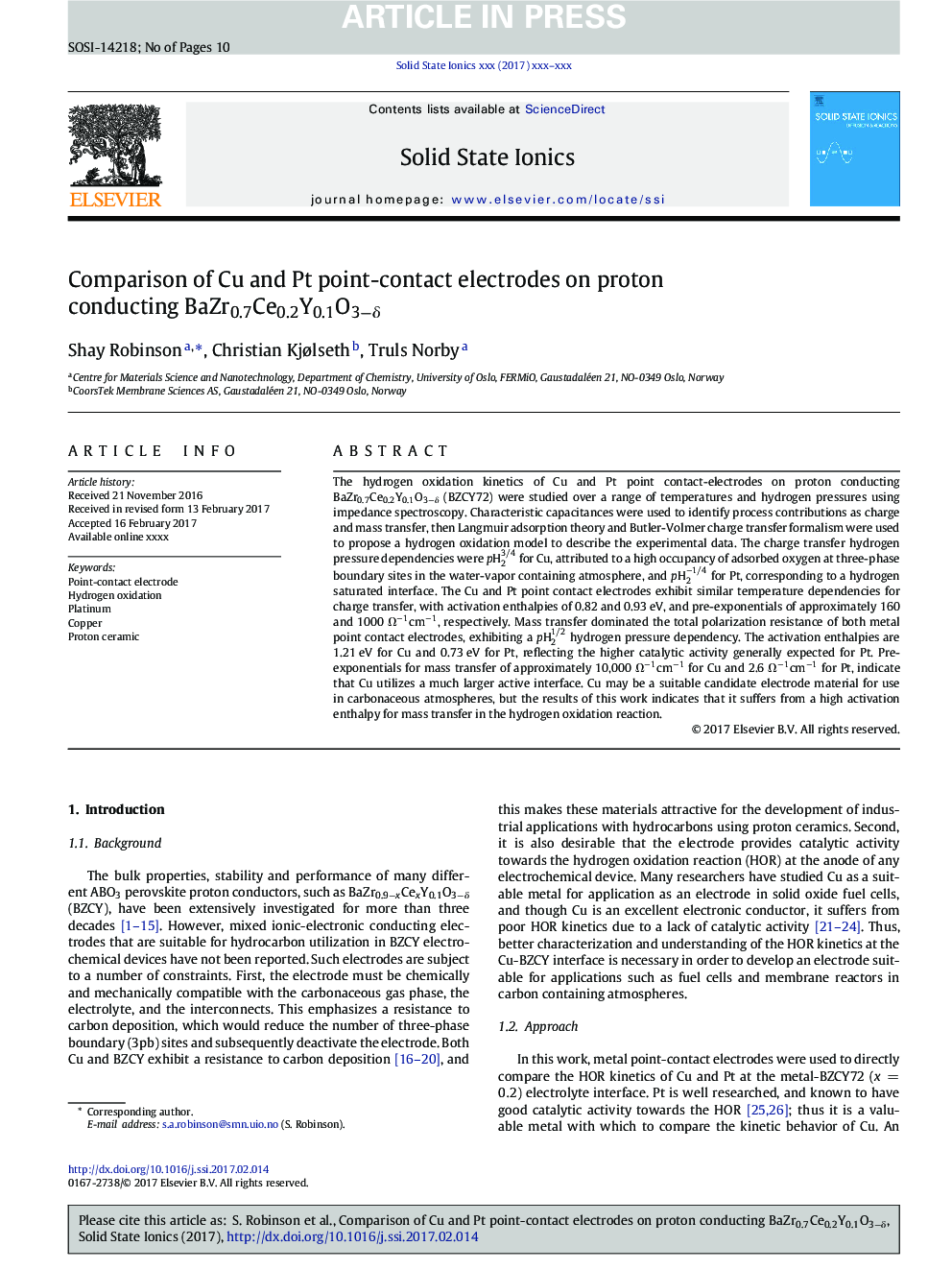| Article ID | Journal | Published Year | Pages | File Type |
|---|---|---|---|---|
| 5150536 | Solid State Ionics | 2017 | 10 Pages |
Abstract
The hydrogen oxidation kinetics of Cu and Pt point contact-electrodes on proton conducting BaZr0.7Ce0.2Y0.1O3âδ (BZCY72) were studied over a range of temperatures and hydrogen pressures using impedance spectroscopy. Characteristic capacitances were used to identify process contributions as charge and mass transfer, then Langmuir adsorption theory and Butler-Volmer charge transfer formalism were used to propose a hydrogen oxidation model to describe the experimental data. The charge transfer hydrogen pressure dependencies were pH23/4 for Cu, attributed to a high occupancy of adsorbed oxygen at three-phase boundary sites in the water-vapor containing atmosphere, and pH2-1/4 for Pt, corresponding to a hydrogen saturated interface. The Cu and Pt point contact electrodes exhibit similar temperature dependencies for charge transfer, with activation enthalpies of 0.82 and 0.93 eV, and pre-exponentials of approximately 160 and 1000 Ωâ1cmâ1, respectively. Mass transfer dominated the total polarization resistance of both metal point contact electrodes, exhibiting a pH21/2 hydrogen pressure dependency. The activation enthalpies are 1.21 eV for Cu and 0.73 eV for Pt, reflecting the higher catalytic activity generally expected for Pt. Pre-exponentials for mass transfer of approximately 10,000 Ωâ1cmâ1 for Cu and 2.6 Ωâ1cmâ1 for Pt, indicate that Cu utilizes a much larger active interface. Cu may be a suitable candidate electrode material for use in carbonaceous atmospheres, but the results of this work indicates that it suffers from a high activation enthalpy for mass transfer in the hydrogen oxidation reaction.
Keywords
Related Topics
Physical Sciences and Engineering
Chemistry
Electrochemistry
Authors
Shay Robinson, Christian Kjølseth, Truls Norby,
